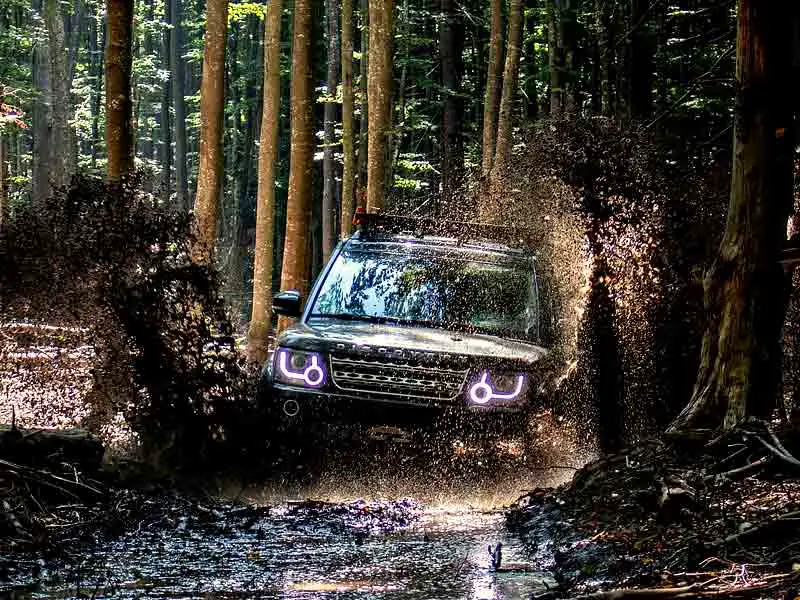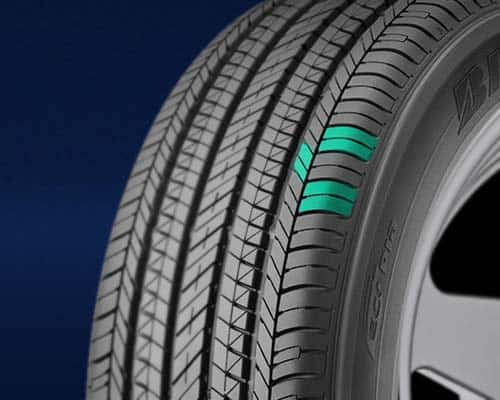All Terrain tires are one of the toughest tires out there which are capable of both highways and off-road. However, as the name suggests, these tires are subjected to various kinds of landscapes and whether or not they stand the test of wear, is a big question.
Compared to street/passenger tires (which mostly stay on smooth roads), All terrain (A/T) tires would wear faster because they are subjected to harsher terrains. And even if they stay on road, they are hard to roll with their softer rubber, multiple biting edges, and weight. So they’ll wear faster here too.

But at the same time when compared to mud terrain tires, they last longer.
Note: If street/passenger/highway tires on the other hand are used off road (just saying for the sake of explaining), they would wear faster there. They don’t have the cut resistant rubber that comes with A/T tires.
Table of Contents
Features of A/T tires that help Them Last Longer:
Tread patterns and rubber compounds are two of the main features upon which life expectancy is dependent.
Since the tread blocks are quite prominent in all-terrain tires, (they make it easier for them to get through rocks and loose ground). But these tires have a much more aggressive tread than highway tires.
So they would wear less off road.
In other words, A/T tires would wear more on road but less off road, while the less aggressive tires would wear off very quickly off road but would stay safe on road.
All Terrain tires have cut/chip resistant rubber which allow them to move on gravel.
They also have designated stone ejectors which scoop out the sharp objects out and away so they don’t get punctured in the tire.
Other than this they are overall more durable with tougher sidewalls (with sometimes up to 3 ply polyester casing).
They also have an advantage of having deeper tread which will take time to wear off.

In case of a famous AT Tire, the BFG KO2, the tread pattern is 15/32″ (or almost 12mm).
There are other A/T tires that go up to 16 mm deep.
This subsequently means that there will be a decreased need for tire changes and in turn, your pocket won’t suffer much.
why These tires Wear Faster (than Highway Tires) On Roads?
Now, all-terrain tires are made out of softer rubber compounds. They are made that way for two main reasons, first has to do with grip. With softer rubber, A/T are able to perform better off road as they produce a “sticky effect” with the surface they are on.
Second, because these tires are made to face different variations of temperatures.
Softer compound in winter don’t stiffen up too much, while in summer, they don’t get too soft, helping their grip in both.
Winter tires are very soft and in summer their squishy rubber wears off quickly. On the other hand, summer tires are hard and they can’t maintain the grip in winter but are great for environments with high temperatures.
All terrain tires rubber comes in the middle (similar to all season tires).
So, with softer rubber, and multiple edged blocks, sipes, notches, staggered shoulders and so on… these tires put more pressure on the road, increasing overall rolling resistance and resulting in wearing.
These tires also weigh more too, (with their high strength steel belts and nylon wrappings inside) and this contributes to rolling resistance as well. As more weight means more power needed to drag the tire.
Another example below, you can see the prominent aggressive design of the Nitto Ridge Grappler compared to a average highway tire (Bridgestone Ecopia)


On the other hand, highway tires are less aggressive (as you can see in the image above). They don’t have the notches or staggered shoulders/bulky sidewalls or deep sipes.
They have less wider grooves and more contact with the ground. And although more contact with the ground technically means more rolling resistance but compared to A/T their less biting edges and weight puts lesser pressure on the road so they wear slower in comparison.
Still, How Can one Increase the lifespan of all-Terrain tires:
First, if you are mostly staying on road but still need A/T tires, go for less aggressive options like the Continental TerrainContact A/T or the Yokohama Geolandar G015. (Continental is one of the best on road oriented tires out there).
These tires are have comparatively lesser biting edges and that’s why they wear lesser than other A/T tires. They would also consume less fuel because of their lower rolling resistance values.
But, if you already have these tires, you can still increase their life with your driving habits and maintenance.
This includes rotating your tires every 5 to 6 months or after every 6 to 8k miles.
Aligning and balancing of the tires also contributes here so make sure your wheels are aligned at all times. (This also protects the tires from uneven wearing and improves handling as well).
Besides this tire pressure also plays a role in wearing. On roads, its best to keep your tires pressure maximum. This would lessen the wear of the tires and at the same time also increase the fuel economy (a little bit).
End Note:
So to sum up, A/T tires would wear less than mud tires but more if we compare them with highway or passenger tires.
This has to do with their rubber composition combined with their tread design.
With softer rubber and aggressive design All Terrain tires are hard to roll so they produce more wear.
But it also makes these tires capable of great off road experience too, where with street tires, you have to stay on road.